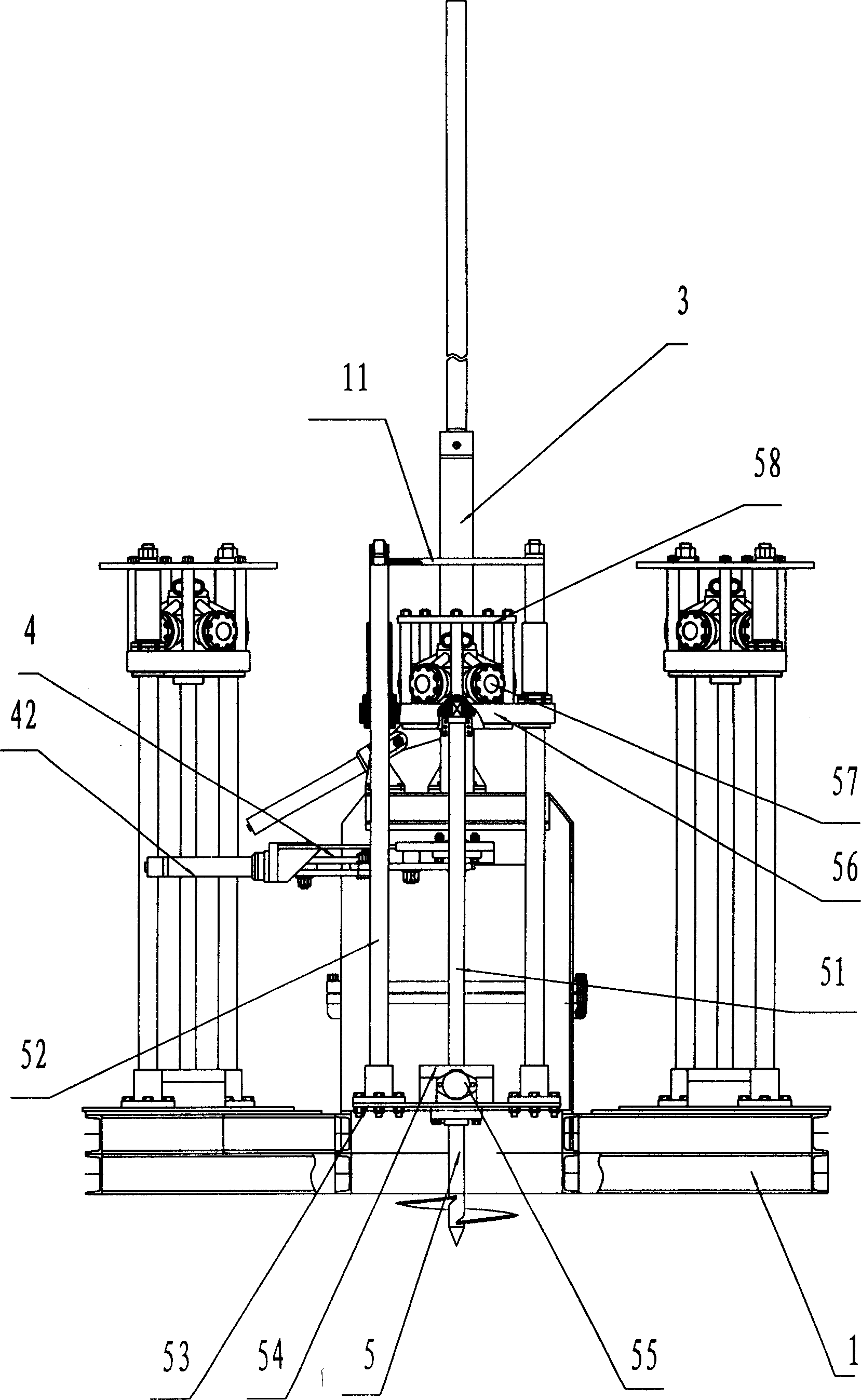Probe penetration implement for detecting and monitoring sea bed soil body
A technology of seabed soil and probe rod, which is applied in the field of foundation soil survey, construction, foundation structure engineering, etc. It can solve the problems of large soil disturbance, easy bending, damage, etc., and has a strong ability to achieve the lateral force of ocean water flow , Avoid bending and damage, and the effect of screwing in with large force
- Summary
- Abstract
- Description
- Claims
- Application Information
AI Technical Summary
Problems solved by technology
Method used
Image
Examples
Embodiment Construction
[0023] Three ground anchor devices 5 arranged in an equilateral triangle, an underwater hydraulic power supply mechanism 6, and a bearing platform 2 of the penetration mechanism are fixed on the base 1 of the penetration tool. The platform 2 is located in the middle of the base 1 . Two probe rods press through the oil cylinder 3 and are fixed on both sides of the bearing platform 2 . The cylinder rod 31 of the oil cylinder 3 is fixedly connected to the chassis 43 of the probe rod intermittent lockset 4. There is a probe rod through hole in the center of the chassis 43 and the bearing platform 2, and the holes through the probe rod and the cylinder rods 31 of the two oil cylinders 3 are on a straight line. The oil cylinder 42 of the rod intermittent lock 4 is fixed on the chassis 43, and the cylinder rod of the oil cylinder 42 is movably connected to two connecting rods 44, and the connecting rod 44 is movably connected to the connecting rod 45, and the two connecting rods 45 a...
PUM
 Login to View More
Login to View More Abstract
Description
Claims
Application Information
 Login to View More
Login to View More - R&D Engineer
- R&D Manager
- IP Professional
- Industry Leading Data Capabilities
- Powerful AI technology
- Patent DNA Extraction
Browse by: Latest US Patents, China's latest patents, Technical Efficacy Thesaurus, Application Domain, Technology Topic, Popular Technical Reports.
© 2024 PatSnap. All rights reserved.Legal|Privacy policy|Modern Slavery Act Transparency Statement|Sitemap|About US| Contact US: help@patsnap.com










